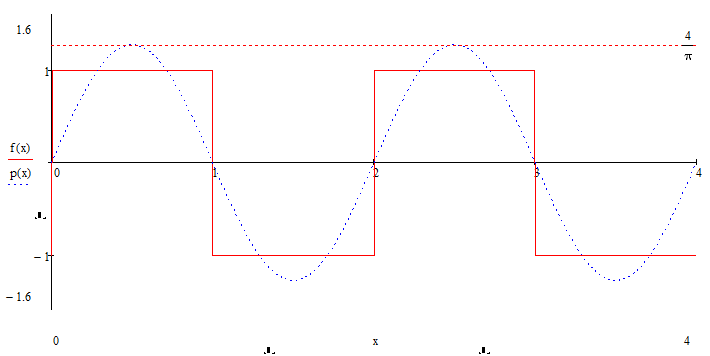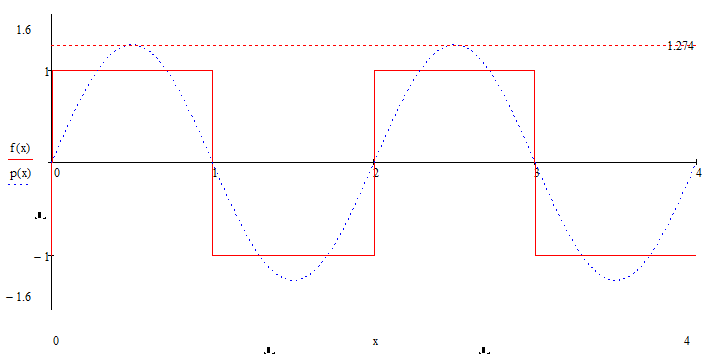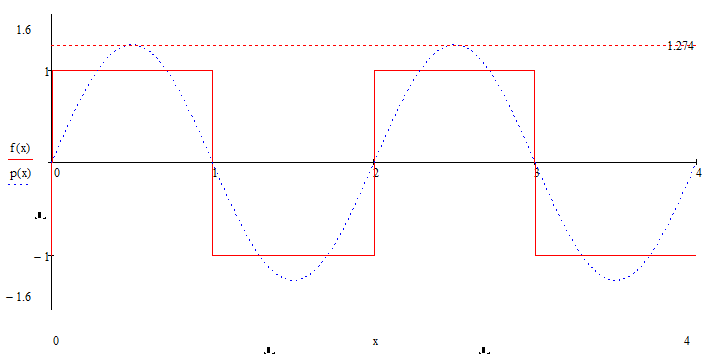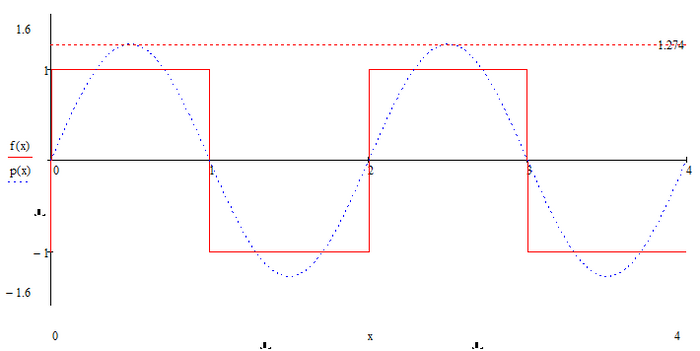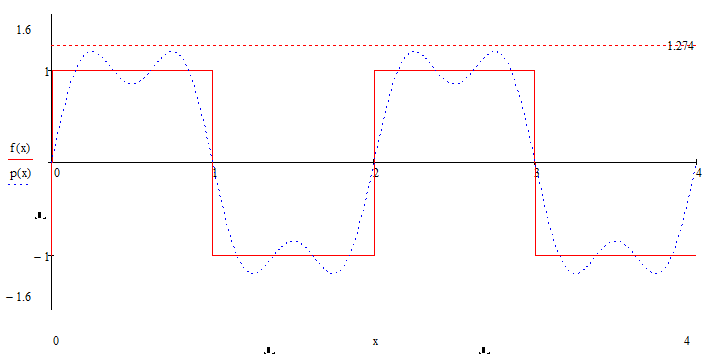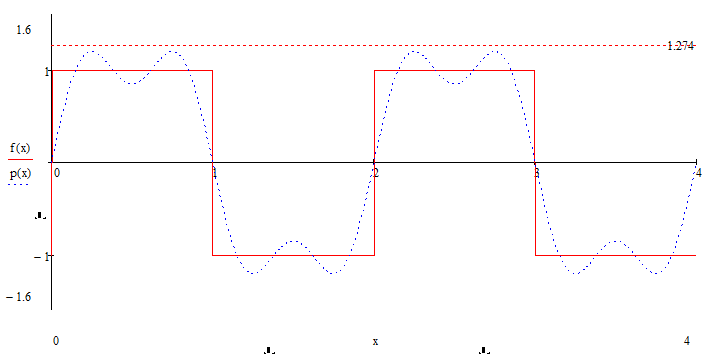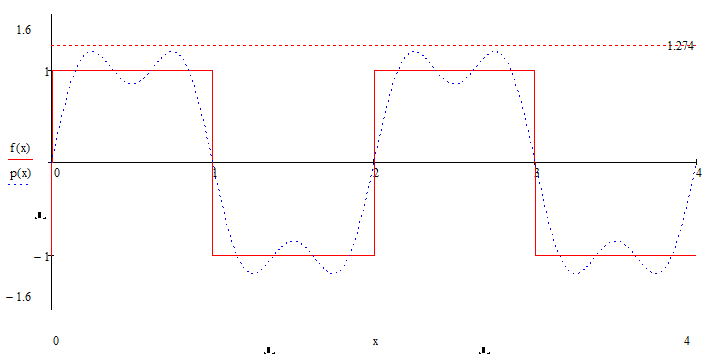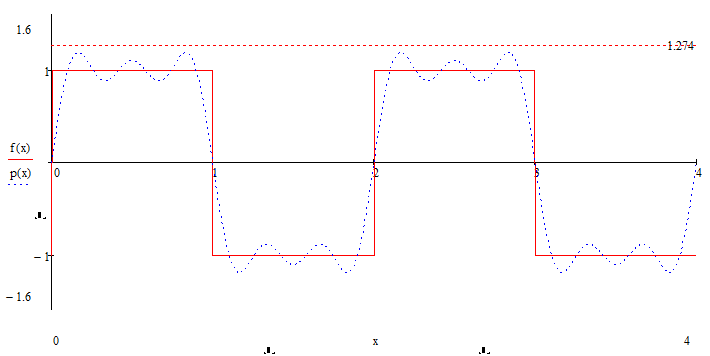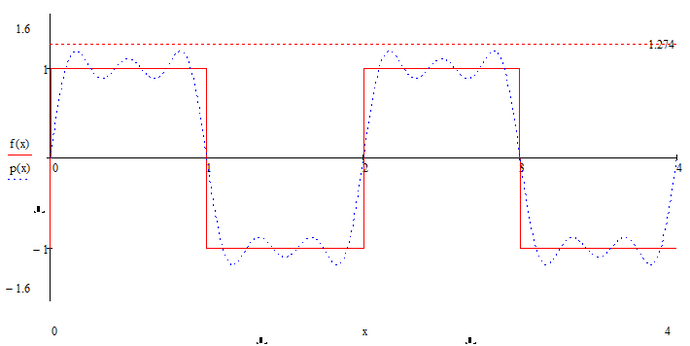Community Tip - Did you get called away in the middle of writing a post? Don't worry you can find your unfinished post later in the Drafts section of your profile page. X
- Subscribe to RSS Feed
- Mark Topic as New
- Mark Topic as Read
- Float this Topic for Current User
- Bookmark
- Subscribe
- Mute
- Printer Friendly Page
Fourier series example problem
- Mark as New
- Bookmark
- Subscribe
- Mute
- Subscribe to RSS Feed
- Permalink
- Notify Moderator
Fourier series example problem
Good day.
I was hoping you could help me with my assignment on programming a fourier series analysis.
Can someone teach me how to graph this on mathcad prime? I need to find the function that will replicate the attached file below.
Your help would be much appreciated, since I am still learning from this software.
Thank you in advance and God Bless.
Solved! Go to Solution.
- Mark as New
- Bookmark
- Subscribe
- Mute
- Subscribe to RSS Feed
- Permalink
- Notify Moderator
- Tags:
- Electric_circuit
- Mark as New
- Bookmark
- Subscribe
- Mute
- Subscribe to RSS Feed
- Permalink
- Notify Moderator
The Nt seems to be the number of harmonics, if I am not misinterpreting it.
Why for the first harmonic Nt should be 2?
Nt shouldn't it be 1 for the first harmonic?
The image above shows the first harmonic and for that Nt needs to be equal with 2.
- Mark as New
- Bookmark
- Subscribe
- Mute
- Subscribe to RSS Feed
- Permalink
- Notify Moderator
Your sheet calculates the first two harmonics of the signal.
BUT, the Fourier sequence of a square wave only contains odd harmonics. So from the first 2 harmonics only the first is (and should be !) visible. The second harmonic is zero.
If you set Nt:=3 I suspect that you should see the result of first and third harmonics added.
Success!
Luc
- Mark as New
- Bookmark
- Subscribe
- Mute
- Subscribe to RSS Feed
- Permalink
- Notify Moderator
I know that the square wave signal has only the odd harmonics, but the first harmonic is the first harmonic, and it is odd:).
What it's your opinion about this sequence?
- Mark as New
- Bookmark
- Subscribe
- Mute
- Subscribe to RSS Feed
- Permalink
- Notify Moderator
My conclusion: There's a 2 missing in each of the sin() and cos() arguments of the Fourier functions that you are using.
The correct function to create a sine of frequency F is not sin( pi * F * t) but sin(2 * pi * F * t).
Now your n has to step twice as much paces to run past all harmonics.
Success!
Luc
- « Previous
-
- 1
- 2
- Next »








